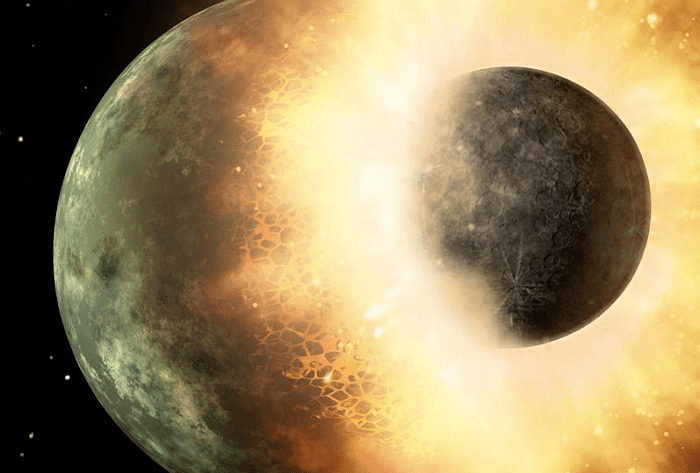 | ||
Stellar collisions
A stellar collision is the coming together of two stars, which through the force of gravity merge into one larger unit. Astronomers predict that events of this type occur in the globular clusters of our galaxy about once every 10,000 years. Scientists have only recently been able to observe a stellar merger. A series of stellar collisions in a dense cluster over a short period of time can lead to an intermediate-mass black hole via "runaway stellar collisions".
Contents
- Stellar collisions
- Type Ia supernova
- Neutron star collisions
- Thorneytkow objects
- Formation of planets
- Discovery
- Stellar collisions and the Solar System
- KIC 9832227
- References
Any star in the universe can be involved in a stellar collision; whether it is 'alive' (meaning fusion is still active in the star) or dead (with fusion no longer taking place). White dwarf stars, neutron stars, black holes, main sequence stars, giant stars, and supergiants, for example, are very different in type, mass, temperature, and radius, and will react differently.

Type Ia supernova
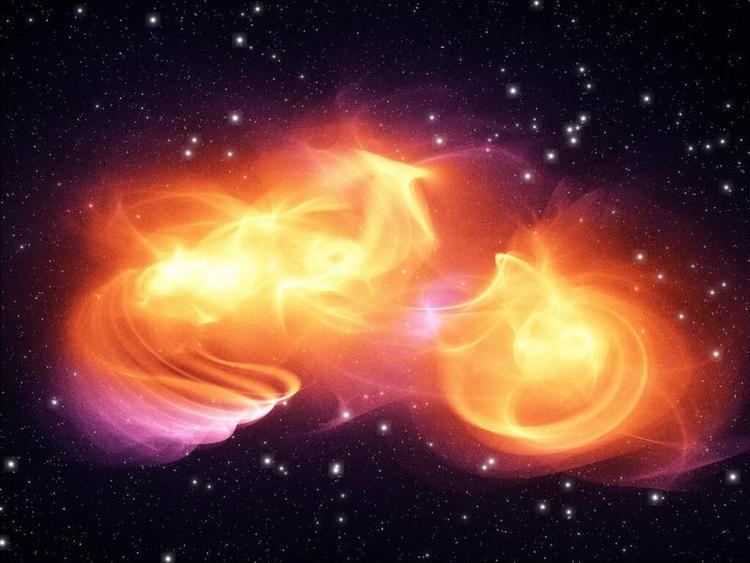
White dwarfs are the remnants of low-mass stars and, if they form a binary system with another star, they can cause large stellar explosions known as type Ia supernova. One route by which this may happen involves a white dwarf drawing material off a main sequence or red giant star to form an accretion disc. However, when two white dwarfs orbit each other closely, emission of gravitational waves causes the pair to spiral inward. When they finally merge, if their combined mass approaches or exceeds the Chandrasekhar limit, carbon fusion is ignited, raising the temperature. Since a white dwarf consists of degenerate matter, there is no safe equilibrium between thermal pressure and the weight of overlying layers of the star. Because of this, runaway fusion reactions rapidly heat up the interior of the combined star and spread, causing a supernova explosion. In a matter of seconds, all of the white dwarf's mass is thrown into space.
Neutron star collisions
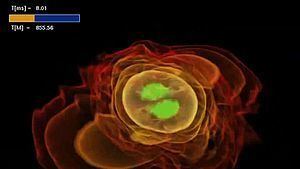
Neutron star collisions occur in a fashion similar to type Ia supernovae. When two neutron stars orbit each other closely, they spiral inward as time passes. When the two neutron stars meet, their collision leads to the formation of a black hole (assuming their combined mass exceeds the Tolman–Oppenheimer–Volkoff limit). This creates a magnetic field that is trillions of times stronger than that of Earth, in a matter of one or two milliseconds. Astronomers believe that this event is what creates certain kinds of gamma-ray bursts.
Thorne–Żytkow objects
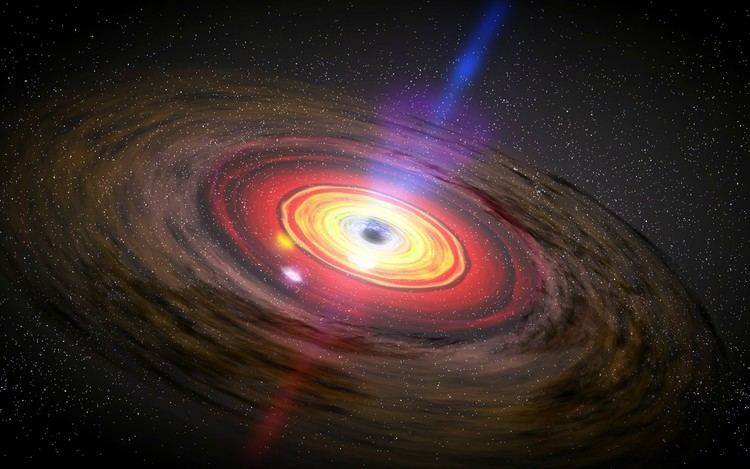
If a neutron star collides with red giant of sufficiently low mass and density, both can survive in the form of a peculiar hybrid known as Thorne–Żytkow object, with a neutron star surrounded by a red giant.
Formation of planets
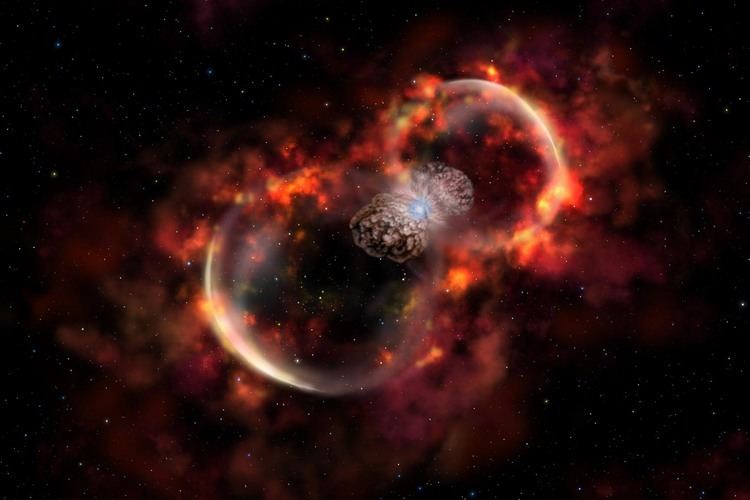
When two low-mass stars in a binary system merge this creates an excretion disk from which new planets can form.
Discovery
While the theory of stellar collision has been around for several generations of astronomers, only the development of new technology has made it possible for it to be proven. In 1764, a cluster of stars known as Messier 30 was discovered by astronomer Charles Messier. In the twentieth century, astronomers concluded that the cluster was approximately 13 billion years old. The Hubble Space Telescope resolved the individual stars of Messier 30. With this new technology, astronomers discovered that some stars, known as “blue stragglers”, appeared younger than other stars in the cluster. Astronomers then hypothesized that stars may have “collided”, or “merged”, giving them more fuel so they continued fusion while fellow stars around them started going out.
Stellar collisions and the Solar System
While stellar collisions may occur very frequently in certain parts of the galaxy, the likelihood of a collision involving the Sun is very small. A probability calculation predicts the rate of stellar collisions involving the Sun is 1 in 1028 years. For comparison, the age of the universe is of the order 1010 years. The likelihood of close encounters with the Sun is also small. The rate is estimated as follows:
N ~ 4.2 · D2 Myr−1where N is the number of encounters per million years that come within a radius D of the Sun in parsecs. For comparison, the mean radius of the Earth's orbit, 1 AU, is 4.82 × 10−6 parsecs.
Our star will likely not be directly affected by such an event, but the Earth may be easily affected by a nearby collision. Astronomers say that if a stellar collision happens within 100 light years of the Earth, the resulting gamma-ray burst could possibly destroy all life on Earth. This is still very unlikely though because there are no stellar clusters this close to the Solar System.
KIC 9832227
KIC 9832227, a contact binary star system, is believed to have merged 1800 years ago, making an explosion that is anticipated to be seen around 2022 in the form of a luminous red nova in Cygnus.
